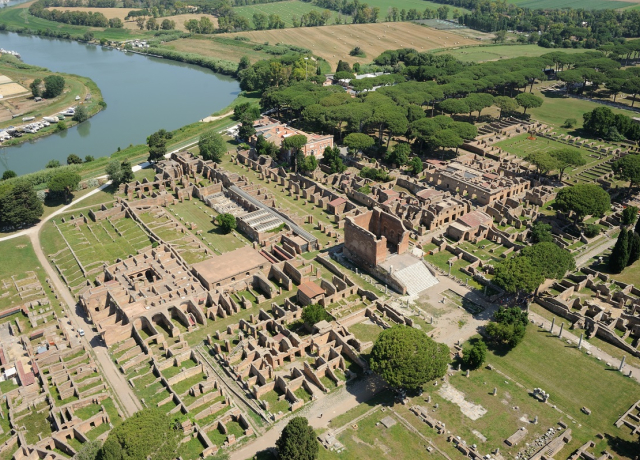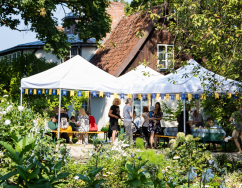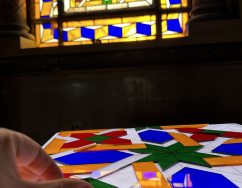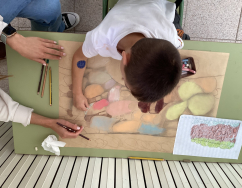European Heritage Days Article:
Educational and Artistic Approaches for Youth and Heritage
European Heritage Days Article:
Educational and Artistic Approaches for Youth and Heritage
Photo: The Roman city of Ostia Antica (credit, Parco archeologico di Ostia Antica)
One of the key audiences grant proposals for European Heritage Days Stories may choose to work with is young people and children, with funds providing opportunities to explore cultural heritage as a tool for education and personal development. Here is a look at two previously awarded projects which demonstrate how grants from the EHD Stories initiative have helped heritage projects engage with younger generations through creative and educational activities in Armenia and Italy.
European Heritage Camp – Armenia
Project background and activities
This grant was awarded based on the Fairy Tale Ambassadors Story from Yerevan in Armenia. The Story described one of the initiatives of the Khnko Aper National Children's Library which invited people from France, Italy, Spain and Germany to tell a fairy tale in their native language with the aim of helping an audience of children discover different cultures and establish a sense of community amongst participants.
The EHD Stories grant was used for a ‘European Heritage Camp’ which further developed the aims of the Fairy Tale project with a 3-day event for children about European cultural heritage. The organisers took a creative approach using the mediums of both literature and visual arts, adding the European dimension by selecting the works of writers and artists from both Armenia and from other countries as the inspiration for the children’s activities. Alongside book readings, the event also included illustration workshops to explore historic art styles and techniques and blended local and European artistic heritage through the traditions of Armenian miniature ornaments. The resulting artwork was used to create an exhibition titled ‘Dialogue of Cultures’. Continuous learning was also encouraged with around 400 children’s books about Armenian and European cultural heritage donated to the community libraries of Spitak and Achajur to establish European literature reading corners in different provinces of the country.
Inclusion and diversity were key to the project aims, with children from different regions and rural areas involved to ensure wide socio-economic and cultural representation. Activities were also tailored to be accessible and provide equal opportunities for participation and learning.
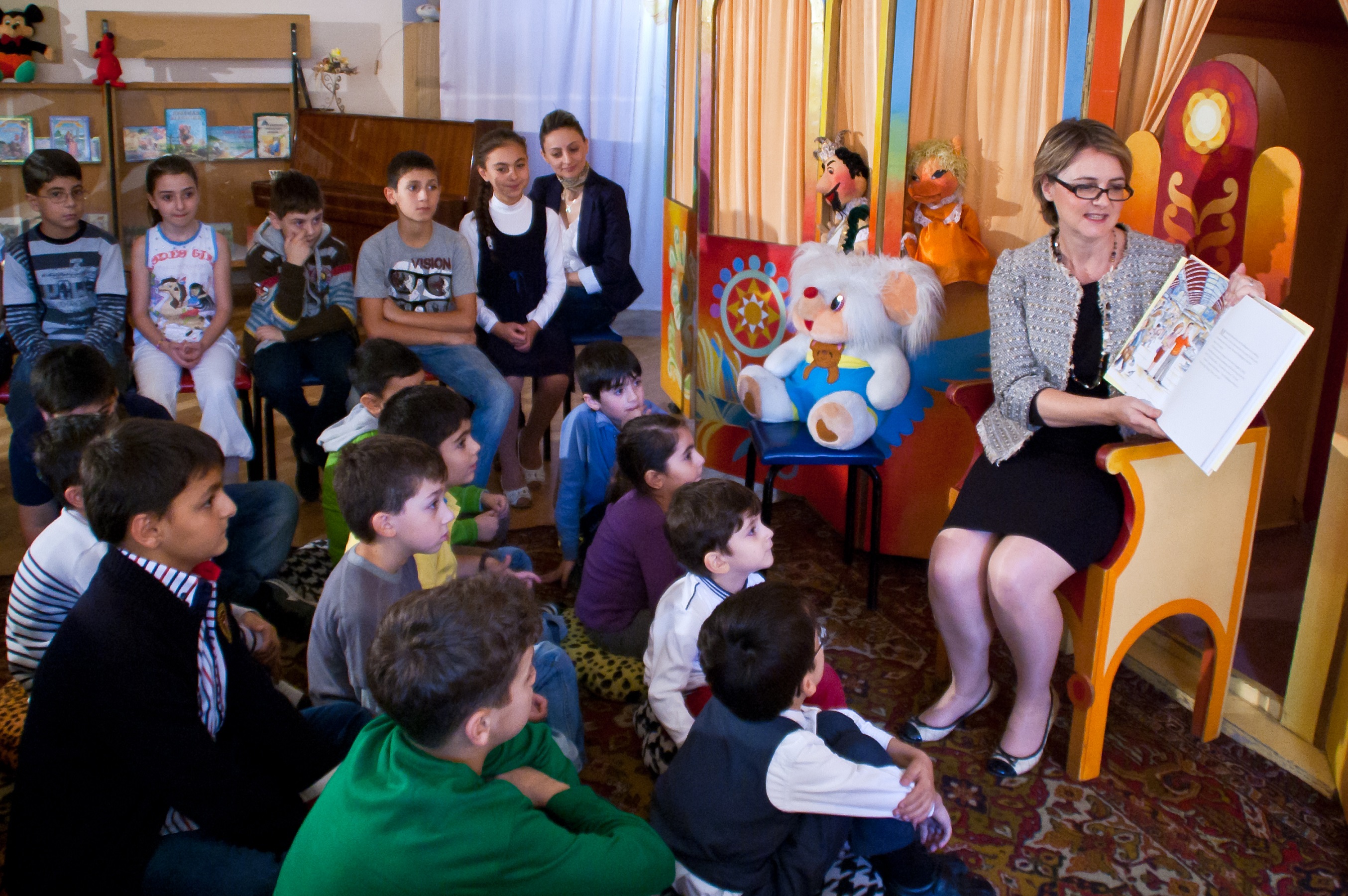
Outcomes and future plans
The project outcomes included providing 30 children aged 8-14 with enriched educational experiences. It encouraged appreciation of European cultural heritage and promoted cultural exchange and understanding. The organisers particularly highlight the project’s strengths in integrating both European and Armenian cultural elements as a way of underscoring the values of diversity and mutual respect, as well as the sustainability of enhancing library resources as valuable additions to community educational infrastructure. The exhibition further reinforced the outcomes of the project by showcasing the impact of the events on the children’s understanding of cultural heritage as well as their personal development in artistic skills and creative thinking.
Positive feedback from both participating children and their parents showed high engagement, while increased interest in future cultural and educational activities indicated at the local libraries demonstrates how the project fostered a strong sense of community. Alongside future plans for regular themed activities, the project is now also being used as a model to expand its reach to libraries in other regions.
Education Yards: Let's Build Our (Hi)story! – Italy
Project background and activities
The original Story submitted for this project was about Public Archaeology in Ostia Antica, an ancient Roman harbour city on the River Tiber. Prior work by the Archaeological Park of Ostia Antica had aimed to improve accessibility and participation in cultural heritage amongst migrant communities from Romania, Ethiopia and Iran and promoted understanding of the area’s archaeological heritage as belonging to everyone.
Using the ancient theatre of Ostia as the location, the Education Yards project used a grant to build on previous work by creating a series of immersive theatrical activities to give classes of school children an insight into the experiences of ancient daily life. Organisers aimed to highlight the multiculturalism of ancient Roman society through the staging of comedies by Plautus and Terentius. After selecting the plays on the basis that the plots were perceived as having modern relevance by the children, the scripts were translated into Italian and adapted with a focus on multicultural themes and contemporary issues. As well as acting classes, workshops were also held to design the sets and costumes, while archaeologist-led guided tours of the ancient theatre of Ostia took place to explain the educational and social importance of drama in ancient society.
To promote the cross-frontier aspects of the project, the organisers aimed to work with schools which had pupils from a diverse range of countries. The activities were also designed for children of primary school age in order to provide early education about the values of tolerance and acceptance.
Outcomes and future plans
The project provided 200 children with civic education and cultural awareness, while painting and acting skills were designed to help the participants develop an increased awareness of their own potential. The themes of the plays opened discussions about the multiculturalism of the ancient Romans and it was appreciated by the pupils that this also allowed reflection about contemporary experiences in the classroom today. The organisers were also particularly pleased that the project presented the archaeological site to a wider audience by involving schools which do not usually visit the area, while many of the 400 parents who attended the performances had also not previously visited.
Both pupils and teachers provided positive feedback and would like to take part again. It is now hoped that the activities can become a regular event as part of an annual festival for local primary schools.
The European Heritage Days Stories initiative will be returning in 2025, and more details about the project, eligibility and application process will be announced on our website soon. And for more information about Stories which were awarded grants alongside these case studies, take a look at the article ‘Grants Announced for European Heritage Days Stories 2023’.
